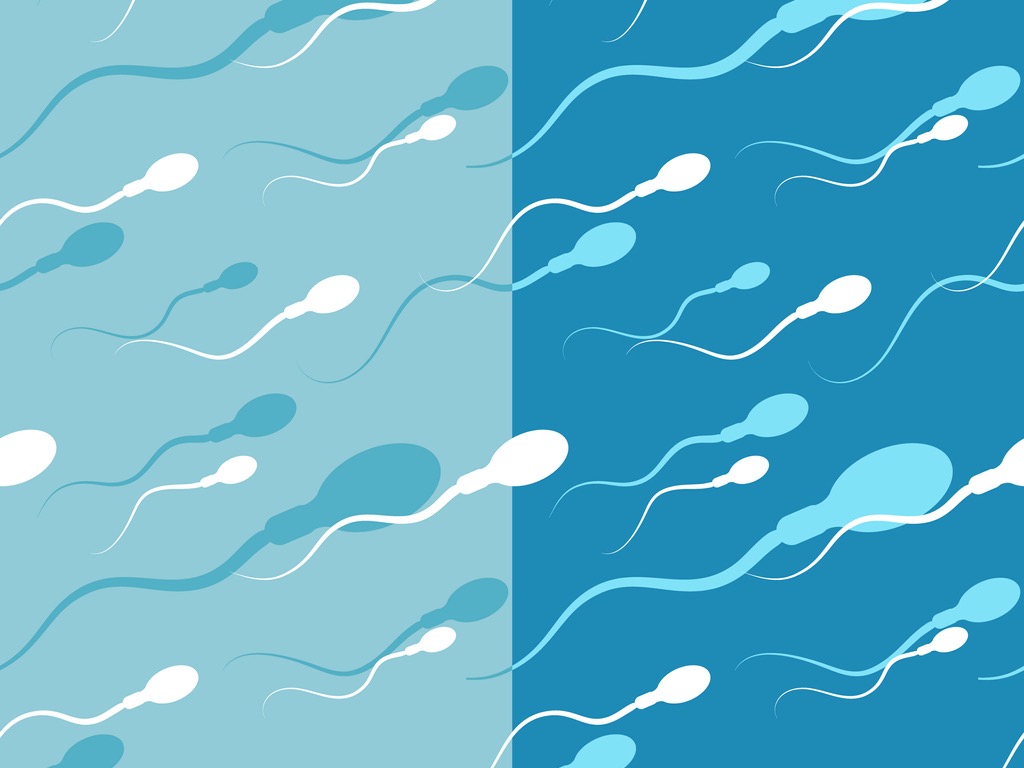Having a miscarriage is devastating. After the loss, most men and women want to know what caused it, and what they can do to prevent or treat the problem. Here is a list of possible causes, treatment options and the scientific evidence for the effectiveness of these treatments to prevent future pregnancy losses. You should always talk to your doctor to see if a particular treatment is right for you.
Chemical pregnancy loss
What is a chemical pregnancy?
- Early in pregnancy, there are specific changes in the woman’s body that can be detected with a blood test or urine test to confirm pregnancy. This is the first stage of pregnancy and is known as chemical pregnancy.
- These hormone changes that happen early on in pregnancy can be confirmed in other ways, such as detection of the heartbeat of the fetus using ultrasound imaging.
What is a chemical pregnancy loss?
- A confirmed chemical pregnancy may fail to progress further, resulting in early pregnancy loss. In this case, the woman has a positive pregnancy test but miscarries before anything can be seen on an ultrasound. This occurs within four weeks after implantation of the fertilized egg or embryo.
- This means that the egg was fertilized with a sperm and implanted in the uterus, resulting in pregnancy. However, for a variety of possible reasons, the embryo derived from the fertilized egg could not grow further. This is what happens during an early pregnancy loss during the chemical pregnancy stage.
- It is hard to know how often such early pregnancy losses occur, due to the fact that many losses are not recognized or diagnosed via a pregnancy test and bleeding occurs around the same time as the expected menstrual period.
What causes a chemical pregnancy loss?
- The exact cause for a chemical pregnancy loss is unknown, however many experts believe that it is due to chromosome abnormalities in the embryo. Many factors can result in chemical pregnancy loss, including poor egg or sperm quality, inherited genetic abnormalities from the mother or father, or abnormal cell division in the developing embryo.
- There are other potential causes, like infections of the genital and urinary tract, uterine abnormalities, abnormal hormone levels, or ectopic pregnancies.
- If your partner has experienced a chemical pregnancy loss, she should consult her physician to get follow-up tests to ensure her hCG levels return to normal. This consultation is important as ectopic pregnancies, a medical emergency, can mimic chemical pregnancies. It will also help her rule out any uterine abnormalities.
- Recently, it was discovered that sperm with poor DNA integrity may contribute to early pregnancy loss. Basic semen analyses that evaluate sperm counts, motility and morphology do not provide specific information on DNA integrity. Thus, even if your sperm analysis results may be normal, if your partner experiences repeated early pregnancy loss, your doctor may recommend further testing on you to be sure that your sperm are not contributing to the pregnancy loss.
Causes and treatments of recurrent pregnancy losses
Miscarriage (also known as spontaneous abortion or pregnancy loss) is the naturally occurring end of a nonviable pregnancy during the first twenty weeks of gestation. Recurrent or multiple pregnancy loss is defined as the occurrence of two or more clinical miscarriages before the pregnancies reach twenty weeks. More than 50% of women with recurrent miscarriages do NOT have an obvious or treatable cause. Even if no cause is identified, many women who have had one or more losses do get pregnant on their own.
Here is a list of possible causes of multiple pregnancy losses, treatment options for women and the scientific evidence for the effectiveness of these treatments to prevent future pregnancy losses. If your partner has experienced multiple pregnancy losses, she should talk to her doctor to see if a particular treatment is right for her.
| Potential Cause | Treatment | Evidence |
|
Hysteroscopic septum resection: A camera called a hysteroscope is inserted into the vagina. The physician then works surgically to repair the inside of the uterus. This surgery is generally considered minor and is a one-day procedure. The woman is put under general anesthesia and recovery is a few days to a week. | There is not yet enough scientific evidence at this time to show that correcting the shape of the inside of the uterus lowers the chance for miscarriage or increases the chance of live births. Studies are underway. |
|
Low-dose of aspirin and/or heparin: A doctor will want to perform a blood test. The doctor wants to see if the woman tests positive for antiphospholipid antibodies. The doctor might also test for Lupus Anticoagulant (LA), anticardiolipin antibody and Anti-B2 glycoprotein. If the woman tests positive for APS, the doctor may prescribe low-dose aspirin in pill form. The dose is usually 81 mg daily. A blood thinner called heparin may also be prescribed. This is usually given by injection under the skin. The dose is usually 5000 units twice a day. | The existing evidence suggests that these medications improve live birth rate. |
|
You and your partner’s DNA can be studied (karyotyped) to see if either of you have a structural rearrangement. If an abnormality in your chromosome is found, your doctor might recommend genetic testing. One common option is pre-implantation genetic testing for chromosome structural rearrangements. This would mean that after IVF, the embryos are tested. Only those embryos without translocations are selected to be implanted in the uterus. |
At the moment, there is not enough scientific evidence to strongly recommend this approach as a way to decrease miscarriage rates. Some studies show that pre-implantation genetic testing lowers the miscarriage rate, while others question the costs involved. A Canadian Fertility and Andrology Society (CFAS) document suggests that you should discuss whether performing genetic pre-implantation testing is right for you. |
|
Appropriate management and treatment of the particular condition. | Some evidence suggests that treating these medical conditions will reduce the chance of repeated pregnancy loss. |
|
Suppressing the immune system so that the woman’s body does not see the fetus as ‘foreign’ can be done by prescribing medication called corticosteroids (such as prednisone). New therapies like paternal cell immunization, third-party donor cell immunization, trophoblast membrane immunization, or intravenous immunoglobulin immunotherapy (IVIG) regimens. These treatments involve stimulating the woman’s own immune system to work harder to attack certain cells. Another treatment involves giving immune system components, such as man-made immune system proteins, either through a vein or under the skin. This treatment can be given before the woman even tries to conceive, when there is a positive pregnancy test, or at the time of the first fetal heartbeat (6-8 weeks). |
While these therapies show some promise, they need to be assessed more long term in clinical trials before recommending that they be used. Currently, there is not enough evidence to show that these therapies prevent miscarriages. |
|
Progesterone supplements can be taken vaginally (vaginal suppositories), or through intramuscular injections during the second half of the menstrual cycle and/or continued throughout the first trimester. | The best available evidence shows no effect. However, progesterone is safe in early pregnancy, easy to use and inexpensive. |
|
Some lifestyle choices women can implement include: 1. Stop or decrease cigarette smoking and alcohol intake; 2. Avoid drug use, notably cocaine; 3. Modify diet to maintain a healthy body weight, increase exercise and cut down on caffeine. | These are known risk factors for many health conditions. More importantly, stopping smoking and using illicit drugs has been shown to reduce the risk for miscarriage among women. |
|
Surgery to remove endometrial-like tissue; Hormonal therapy (medication). | More research as to the connection between endometriosis and miscarriage is needed. |
Causes and treatments of Recurrent Implantation Failure (RIF)
RIF is diagnosed in women who have had three failed in vitro fertilization (IVF) attempts with the transfer of good quality embryos, and is only applicable to patients undergoing assisted reproductive technology (ART). Many of the potential causes and treatment options for RIF are similar to those for Recurrent Pregnancy Loss. Some other potential causes and treatment options are:
- Potential Cause: Chronic endometritis - infection of the uterine tissue
- Treatment: Antibiotics
- Potential Cause: Problems with the Endometrial lining
- Treatment: Hormonal treatment - medication to thicken the lining of the uterus to promote successful embryo implantation.
- Potential Cause: The embryo is not transferred at the optimal time in a woman’s cycle (during the woman’s specific window of implantation)
- Treatment: Endometrial Receptivity Array (ERA) - A personal evaluation done via endometrial biopsy (collection of a tissue sample) to find the ideal time for a woman to receive an embryo in order to increase chances of implantation.














